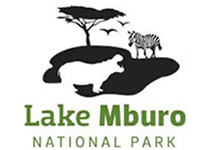Traditionally used by Bahima pastoralists, the Lake Mburo area has a long history of transhumance – a seasonal movement of people and their livestock in search of good pastures. In the past, these movements were quite extensive, from as far south as the Uganda/Tanzania border north to Mityana and Masindi. Now their movements are restricted by development and occur in a much smaller area.
Because there are porous soils and few sources of permanent water in the surrounding area, people and their cattle together with much of the region’s wildlife are dependent on the lakes and swamps for dry season grazing and water supply. This seasonal dependence brings animals and domestic stock within the park boundaries and visitors may see herd of Ankole cattle grazing alongside wildlife.
These long-horned cattle are a delightful feature of the Ankole region. Their hollow horns are not as heavy as the look.
They can be polished and fashioned into the beautiful horn jewelry sometimes seen in curio shops in Kampala.
Cows conceive at 3 years old and give birth after an 8-months gestation. They seek cover a couple of days before calving – often going to the same place where they calved before.
The calves hide for 2-4 weeks. Their mothers stay close at night, and don’t go further than about 500m away during day, suckling the calves briefly some 4 times in each 24 hr period.
Cattle represent wealth and security to the Bahima people and are a status symbol as well as providing meat and milk. They are used as dowry at marriage and are sometimes sold when cash is needed by the family.
Since the turn of the century, Lake Mburo had been known to a handful of naturalists as one of the premier wildlife areas in East Africa. The area used to form part of the Nkore Kingdom which was ruled over by the Omugabe, the Bahima king. The Omugabe controlled access to the land around Lake Mburo, allowing his people to use it for grazing their cattle only in times of drought.
Many natural resources are used by the people around the park for a wide variety of purposes. Papyrus is harvested for thatching materials and weaving into mats and baskets. The dense wood of the wild date palm, resistant to termites, is used for building and the leaves used to make mats and baskets. Albizia wood is used for making milk gourds and extremely ornate and decorative covers are woven from local grasses (Eleusine and Eragrostist) and edges (Cyperus). The light, pliable branches of the shrub Acalypha are dried and used to make beehives and fish traps. The Comunity Conservation Unit and the park’s ecologist are collaborating with local people to organise controlled and sustainable use of some of these resources.
